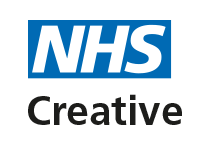10 tips for checking proofs
Is that document really ready to go to print?
Whether you’ve been involved from the start or are new to a project, proofreading is more effective with a fresh pair of eyes and an open mind. Remember, you aren’t rewriting what’s already been agreed but making sure it’s accurate and correctly placed by the designer. Here are some tips to help with the process:
1: Before anything else, have a read through.
Read the entire document through once to get an overall feel for content and layout before you start to make changes.
2: Proofread at your own pace.
Take your time. Proofread the document in small chunks because your mind is likely to fill in the gaps and assume something’s right if the majority is. Check for punctuation and spelling irregularities, and remember your organisation style guide, i.e. organisation, instead of organization.
3: Double-check names.
These should have been checked before submission to the designer but you should never assume. Therefore check the spelling of all names, company names and locations; anything that’s not in the dictionary!
4: Double-check numbers.
Check all numbers carefully against original information (not just the supplied copy), especially where financial information is involved. Telephone numbers are different because there’s an easy way to check them; call the number!
5: Look for inconsistencies.
Check for consistent use of formatting such as capitalisation for abbreviations, acronyms and titles, and use of italics and bold for highlighting information. Also ensure the layout of times and dates follows your organisation guide (e.g. 16:00 or 4pm).
6: Don’t overlook the obvious.
Try proofreading headlines, subheads etc backwards; this will help you focus on the words instead of the meaning.
7: Graphics shouldn’t be forgotten either.
Check imagery is suitable for its context and sits well within the text and the page as a whole. Proofread captions and make sure they sit with the right photo.
8: Look at spacing.
Check for consistent spacing between sections of text such as headlines, subheads and body copy. Also, check that spacing is consistent within the paragraph—when compiling text from various sources there may be both double-spacing and some single-spacing.
9: Partner up.
If possible, have another person proofread so that you can resolve queries before going back to the designer. There’s nothing worse than getting amends that consist of question marks! More sets of amends mean more time and money.
10: Print out.
It is best to print your document and proofread a hard copy rather than relying on reading on-screen, even when proofreading Web pages. Although we try to be environmentally-friendly, there’s no getting away from the fact it’s easier to read accurately from hard copy.


